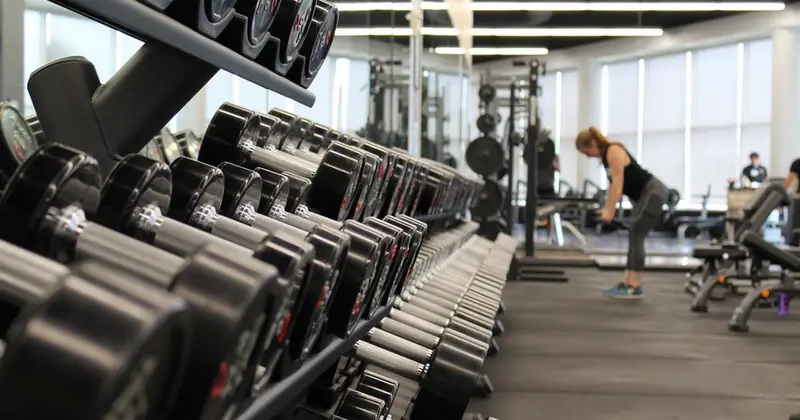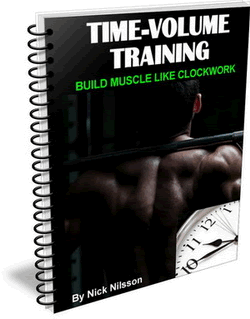By Jane Sandwood
Over 100 diseases and injuries are caused by living or working in an unhealthy environment, according to the World Health Organization.
Whether you work out at home or at a gym (or enjoy a combination of both), keeping your interiors clean is key to your health and wellbeing. To ensure you perform at your best, make sure that the temperature, air quality, and cleanliness levels are exactly as they should be. This way, you can keep illness at bay and give it your all at your next workout.

The Importance of Indoor Air Quality
Unless you live in a highly polluted area, frequent ventilation will ensure that indoor toxins have a chance to escape. According to the Environmental Protection Agency, indoor air quality can be two to five times worse than outdoor air quality.
The main problems arise from fine particles (which come from burning candles and wood), chemicals from harsh cleaning products, and pressed wood furniture (which can contain formaldehyde and other toxic substances). When you exercise, you take in more oxygen than when you are rested, so keeping indoor air clean will ensure you do not stress your respiratory system or inhale toxic substances.
Important steps include investing in a good quality HEPA filter (which traps tiny airborne particles), avoiding the use of paraffin candles, removing carpets, using natural cleaning products, and using a quality vacuum cleaner instead of toxic cleaning products.
The Dangers of Mold and Allergies
The National Center for Healthy Housing has found that one in three homes has mold, a problem which is intricately tied in to asthma and skin allergies. Some of the many symptoms mold can cause include coughing, headaches, sore throat, and fever - which are clearly unconducive to enjoying your workout and achieving new goals.
Anything that traps moisture is a potential breeding ground for mold, so make sure the area you work out in is dry and clean. If plumbing is the problem, ensure it is fixed by professionals. If you live in a humid area, use a dehumidifier and air conditioners/heaters with allergy-friendly filters.
Setting the Right Temperature
The ideal temperature when working out indoors should hover between 68 and 74 degrees Fahrenheit. As noted by sports magazine, Iron Man, warming muscles up and keeping them warm throughout your workout will help prevent injuries and help you achieve your fitness goals.
If a room is too hot, however, you can face heat exhaustion, since your temperature may rise too high for your body to cool itself down. If you live in a very warm area, choose workout times wisely. Either early in the morning prior to sunrise or later in the evening are ideal.
Keeping Noise Levels Down
Excess noise can hamper your flow and kill your concentration, so if you do build a home gym or dedicate a space for exercise, make sure it is in the quietest area of the home.
If the noise comes from outside, soundproofing your home gym will definitely help you breathe a sigh of relief when you can work out without the distracting sound of outdoor drills and other machinery.
Another way to drown out distracting noises is to exercise in rhythm to your favorite upbeat tunes. Studies have shown that listening to music during physical activity can increase your physical capacity, lift your mood, and boost your energy efficiency. Use wireless earbuds for comfort and choose music that makes you feel like moving your body.
Battling Gym Germs
If you work out at a gym, beware of the many germs that can hamper your workout plan by infecting you with colds, flus, and other diseases. A study published in the Clinical Journal of Sports Medicine found that gym equipment (equipment used by various persons) contained a wide array of viruses, including the rhinovirus – which can cause colds.
Another study published in 2014 found many different bacterial strains on equipment, including those which cause staph, UTIs, and salmonella. Falling prey to either gastrointestinal disease or flu can set you back for at least a week, which can be a big problem if you have an important fitness event or challenge coming up.
Keeping Equipment Clean
If you have a home gym and many people share equipment, frequent cleaning is important. Moreover, everyone should use a spray bottle before and after working out, to keep bacteria levels down. You can make a simple, non-toxic spray by mixing white vinegar and water at a 50/50 ratio.
Cleaning sprays made with essential oils such as Thieves (which contains clove and other bacterial fighting oils) will also work, giving your equipment a beautiful fragrance as well. In addition to wiping down weights, address shared mats, seats, and benches.
Wash your hands before and after starting your workout as well, and wear flip-flops if you shower at the gym. This will keep difficult-to-treat conditions such as tinea and plantar warts at bay.
Finally, don’t work out if you are ill, since the germs you leave on contact surfaces could potentially infect others. If you have a home gym, clean it every couple of days if possible with a powerful steam vacuum cleaner. This type of cleaning method kills germs without the need for harsh cleaning products like ammonia or formaldehyde.
Conclusion
Achieving your fitness goals depends more on your immediate environment than many people realize. Good air quality will ensure your lungs inhale the pure oxygen they need so you can complete a challenging workout. Cleanliness, silence, and setting the right temperature, meanwhile, will boost your comfort level and help you concentrate on giving it your all, every time you exercise.
![]()
More From Fitstep.com
| How Do I Build a Bigger Butt? | |
| How to Spot Reduce Stomach Fat | |
| How I Got My Butt Kicked By a 68 Year-Old Woman | |
| Get a Ripped Six-Pack With Abdominal Sit-Ups |
Share This Page...
---
Home -> Fitness For Beginners -> Articles -> Environment and Fitness



